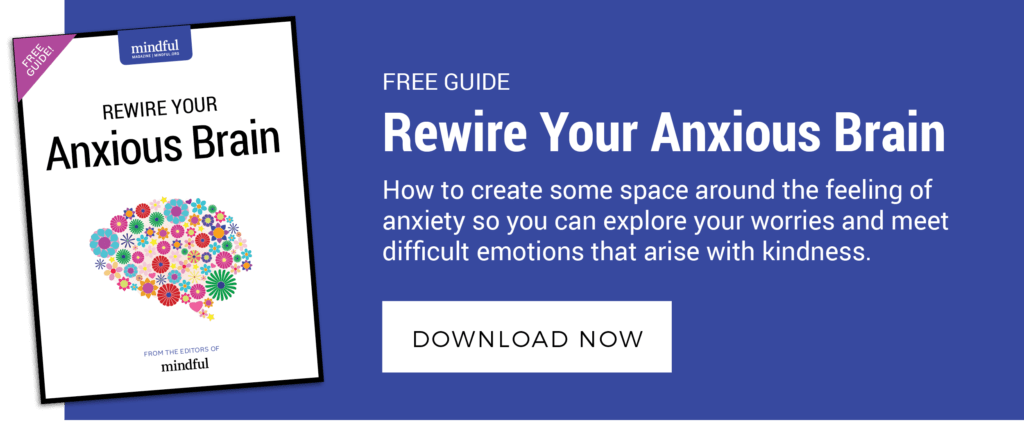Anxiety is the great unifier these days. It seems everyone is suffering from it. What if gaining perspective on your anxiety was as simple as asking yourself one simple question?
What if gaining perspective on your anxiety was as simple as asking yourself one simple question?
That’s the idea behind author Byron Katie’s process to reduce stress. Katie is founder of The Work, a method of inquiry for identifying and working with stressful thoughts. She advocates that a yes or no question helps us get to the core of what’s bothering us so we can understand and relieve anxieties.
Katie suggests looking at a stressor with this question in mind: Is it true? In this video from Big Think, she shares a three-step process for working with this question so that you can change your relationship to stress.
First, name your stress
Many of us may carry around stress from day to day, but aren’t able to put a name to what is causing us to feel that way.
The next time you recognize that you’re stressed (maybe when your shoulders start to tense up, or you realize you haven’t eaten all day), Katie recommends pausing to notice what’s brought on the feeling, and then write it down.
For example, you may write: My family is causing me stress.
Doing so makes the idea concrete. “It’s stabilized from mind to reality; it’s solid, identified and anchored,” Katie says.
Then, ask yourself THE QUESTION:
Once you have the source of your stress written down, consider the question: Is it true?
Katie recommends answering this question with a simple yes or no.
“Any defense or justification or story is not inquiry,” she says. “Inquiry is to get still and let the answer show you… and so we just meditate on that.”
Recognizing whether you believe that thought to be true can help you identify why you act the way you do in certain scenarios. For example, if your answer to My family is stressing me out is Yes, that’s true, that may explain why you avoid your parents’ phone calls or lash out at your partner.
“It’s like [asking], ‘How do I react when I believe the thought?’” Katie says. “If we get really still, we can see that’s when we go for the chocolate cake, or the cigarette we said we’d never smoke again, or the alcohol.”

Finally, flip the narrative
Consider what would happen if you didn’t believe that thought was true. If you responded to My family is stressing me out, with No, that’s false, would they still cause you stress? Or would you open yourself up to another reason for how you feel?
In other words, says Katie, your family and their actions may not actually be stressful in and of themselves—rather, it’s your thoughts about them that stir anxiety.
“It’s what I’m thinking and believing about it, that is the cause of my stress,” she notes.
She recommends reframing the statement to identify whether our own actions are the reason for our stress. For example, writing down: I am stressing my family out.
“And then I begin to see when I’m stressed out, how I approach people: I’m short. I can be argumentative… I’m rushed. I’m not connected,” Katie says.
The practice is ultimately about changing your perspective, instead of getting stuck in a cycle of negative thoughts.
“Everything shifts, the way you see everything shifts,” Katie concludes.








